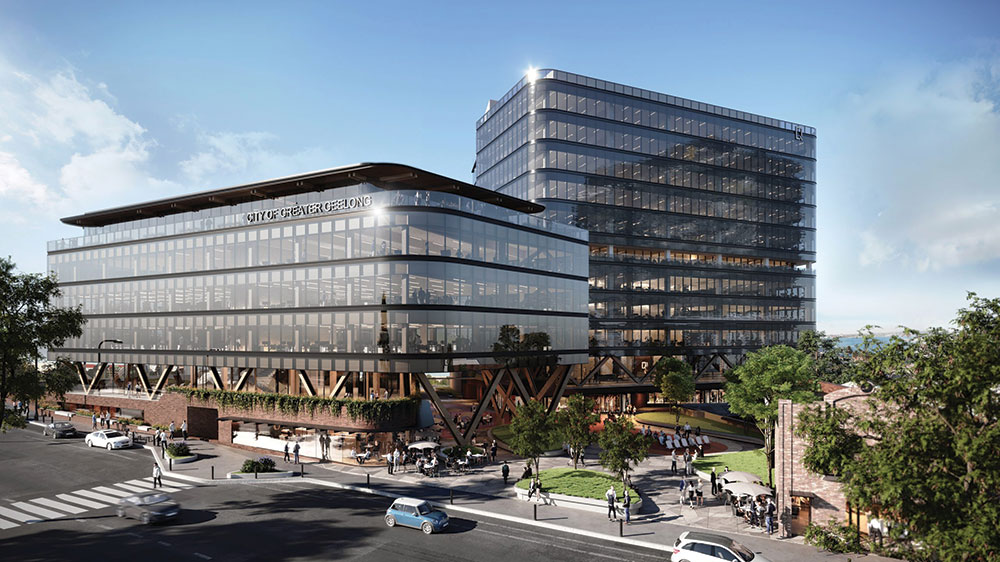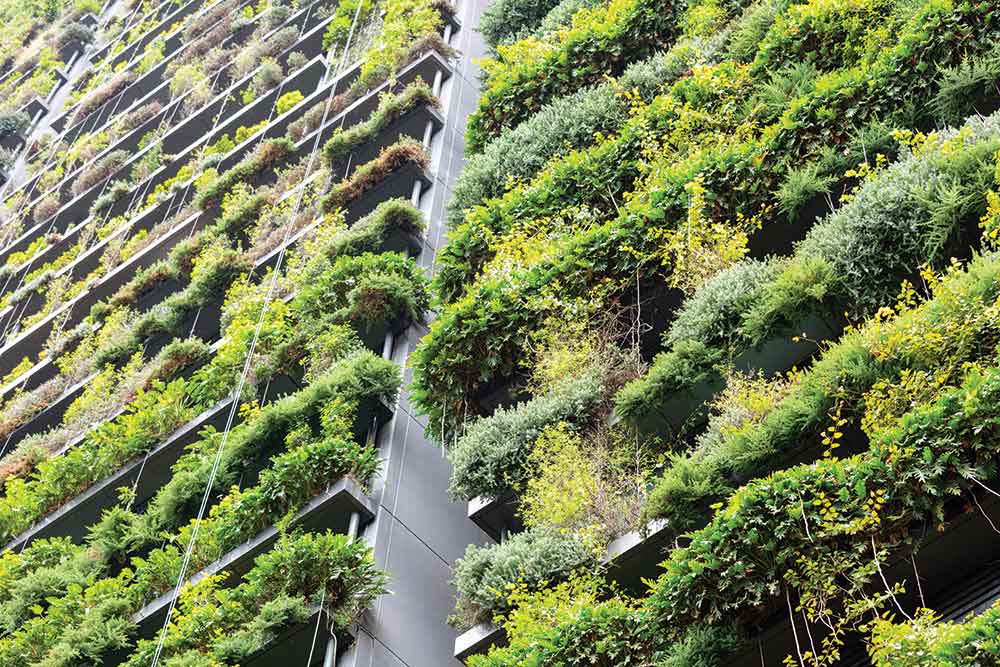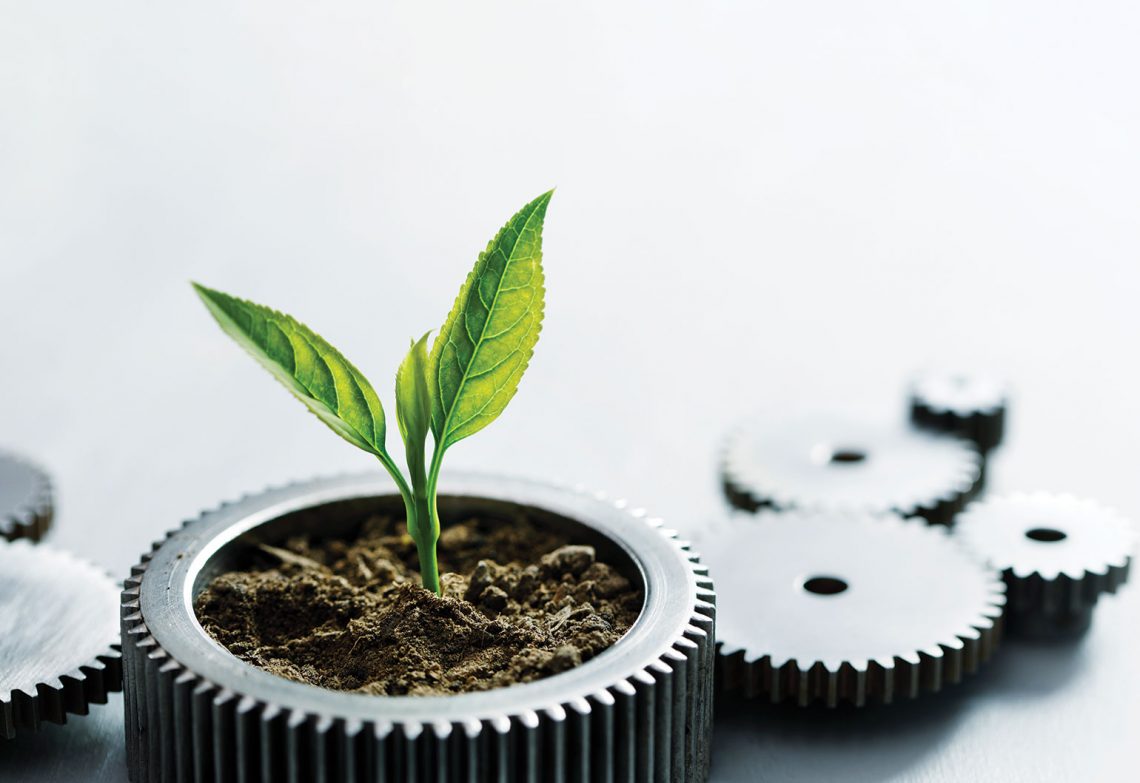As Australia recovers from the damage wrought by the twin devastation of bushfires and a pandemic, prosperity and sustainability must be intertwined.
The past 12 months have been some of Australia’s most challenging to date.
Just as the country began to assess the damage caused by horrific bushfires, the world had to face a health and economic crisis of unprecedented scale.
While Australia remains vigilant to the coronavirus threat, attention is now turning to recovery.
If this crisis is not to be wasted, what might a post-pandemic Australia look like? And what opportunities do engineers have to rebuild the nation with sustainability at its core?
Australia has a history of building its way out of crises. Large-scale infrastructure projects, such as the Sydney Harbour Bridge in the 1920s and 1930s, and the Snowy Mountains Scheme, which started in the late 1940s, were central to economic recovery from two world wars.
Now, infrastructure investment looks set to help Australia recover from the COVID-19 recession — the country’s first in almost three decades.
The COVID-19 crisis is predicted to keep the Federal budget in deficit for at least the next decade. Treasury’s key economic forecasts show that net debt is expected to reach $966.2 billion, or 43.8 per cent of GDP, by the 2023-24 financial year.
Significant money is being poured into the recovery effort. The Federal Government announced plans this past June to speed up the approval process for 15 major projects, including a $10 billion inland rail project from Melbourne to Brisbane, a second underwater power cable to Tasmania and an expansion of the Olympic Dam in South Australia.

to Brisbane.
The Government also plans to launch a new era of Australian manufacturing as part of its JobMaker Plan.
Around $1.5 billion in new funding will be invested over the next four years in the Modern Manufacturing Strategy to make Australian manufacturers more competitive and resilient.
Natalie Muir FIEAust CPEng, General Manager Water and Environment at engineering services company Cardno, said the road to economic recovery presented engineers with an opportunity to consider the legacy they wish to leave.
“I’m of the view that we shouldn’t be looking for sustainable projects as something separate to focus on,” she said.
“We should be looking to make all of our projects more sustainable. Now is a great opportunity for us: do we want to continue to be business as usual, or do we use this time to build a more sustainable future?”
Facing the crisis
If the pandemic has taught us one thing, it’s that overcoming challenges requires consensus and clear direction.
Lara Harland CPEng, Senior Consultant at EnviroEngineering Solutions in Brisbane and Chair of Engineers Australia’s Environmental College, said that COVID-19 has shown that, with enough will, anything is possible.
“We can actually address this climate crisis head on, but it’s about getting politicians and even the community to understand what’s happening and how serious it is,” she said.
“Everyone listened to the scientists for COVID-19 and did what they suggested. So far, that’s worked well for Australia. Why won’t we do the same thing for climate change?”
Stan Krpan, CEO of Solar Victoria, the entity delivering the Victorian Government’s Solar Homes Program, sees the pandemic as a valuable lesson for building a more sustainable future.
“We’ve seen how we can mobilise resources, the economy and human capability to make a difference,” he said.
“I think one of the positive byproducts [of the pandemic] has been the focus on home and family and health and sustainability and how we might reimagine what an economic recovery looks like. As an optimist, that’s really exciting.”
Krpan has seen the transition to renewable energy accelerate over the past 12 months.
“We’ve now served more than 115,000 Victorians, and they are all retrofits,” he said.
“Perhaps, because of COVID-19, people are focused more on their homes. We’re finding that applications [for solar] are higher than ever — we’ve seen a 30 per cent increase year on year for installations.”
Seizing the moment
A sustainable reset in Australia will bring economic rewards.
The Infrastructure Sustainability Council of Australia Infrastructure Sustainability Rating Scheme shows that infrastructure projects that meet social, environmental, governance and cultural outcomes deliver up to $2.40 in benefit for every dollar spent.
Shane Quinn, a civil engineer and Director of property fund Quintessential Equity, said it’s also cheaper to rent a green building due to lower operating costs.
“I think we’ve made massive leaps and bounds in the carbon reduction of the operation of a building during its lifecycle, but where we really need to challenge ourselves is the creation of a building,” he said.
“It takes up to approximately 200 years to pay back the carbon footprint of the creation of a structure by the base-building energy. This is because 200 years of power is the equivalent of the creation of a building on day one, because the energy embodiment in steel and concrete is so high.”
Quintessential Equity is currently working with Geelong council on a building made from cross-laminated timber, which has a lower embodied carbon footprint.

ACT Chief Engineer Adrian Piani FIEAust CPEng said engineers may also need to reconsider the design parameters of infrastructure after the pandemic.
“When faced with industry 4.0 and the digital revolution, I think engineers are grappling with getting the most out of the infrastructure or the services we’re providing,” he said.
“Many times, when we design things like an energy network, a pipeline or a road, we design them for the peak demand.
“The pandemic has shown that we don’t need to be in the office five days a week, so do we need to provide office accommodation for our total workforce, and does [the office] need to be so big?
“This flows through to transport: if we’re changing our work habits and we’re diffusing that 5.30pm peak, maybe our roads don’t require additional lanes. As the way we use our infrastructure changes, its design parameters might change quite significantly.”
Engineers Australia CEO Dr Bronwyn Evans HonFIEAust CPEng said the next generation of engineers will have the opportunity to “put sustainability at the core of every engineering project, every engineering discussion and every engineering proposal”.
“They will do that by using the enormous digital capabilities that they have as ‘digital natives’,” she said.
“They will be comfortable with deploying AI, with creating digital twins and with embedded wireless sensor networks. This capability will allow them to practice ‘sustainable-by-design’ in all that they do.”
Fixing for the future
Maintaining existing assets will be essential in the road to recovery. Engineers Australia’s 9-Point plan for economic recovery from the COVID-19 pandemic notes that not only is maintenance vital for good asset management and for extracting maximum value from investments, it often requires relatively short planning timeframes and often uses a broad mix of skilled and unskilled workers.
Steve Posselt FIEAust CPEng, a civil engineer and Chair of the Sustainable Engineering Society, said maintenance should take precedence over new builds.
“I don’t necessarily agree that infrastructure is the best way forward in terms of building our way to recovery,” he said.
“The amount of bang you get for your buck when you put it into new infrastructure is quite low, and that’s because infrastructure is made up of all sorts of big stuff: big equipment, big machinery, big lumps of concrete and dirt.”
He advises making current infrastructure fit for purpose.
Suzanne Toumbourou, Executive Director at Australian Sustainable Built Environment Council (ASBEC), said it is “strongly encouraging” governments to consider a retrofitting agenda. Engineers Australia is a member of ASBEC.
Toumbourou points to the South Australian Government’s announcement in November of $60 million to improve energy efficiency in government buildings.
“It’s an incredibly wise use of government money to ensure the assets financed by taxpayers operate more efficiently,” she said.
“Ideally, it will also improve the levels of comfort in those buildings and support more productive workforces. There’s a win-win outcome when you invest in that way.”

Overcoming challenges
The road to recovery presents opportunities to rebuild with sustainability at the core, but there will be challenges along the way.
Toumbourou said the opportunity requires commitment.
“As an example, when the pandemic first hit, the Western Australian Government was pressured by a section of the building sector to hold back the transition to the 2019 National Construction Code,” she said.
“The 2019 code stipulates very significant improvements in energy efficiency for commercial buildings and closed some really significant energy-efficiency loopholes for residential buildings.
“This means that in Western Australia, government investment in new social housing stock will go into creating homes built to an old and less energy-efficient standard. By contrast, the Victorian Government … announced an investment of over $5 billion in social housing — all built to seven-star energy efficiency, which is above the current minimum standard.”
Muir said that time represents one of the greatest challenges in rebuilding more sustainably.
“If we push forward to spend and spend quickly, there can be a tendency to just do things the way that we’ve always done them,” she said.
“If we want to put a true focus on leaving more of a sustainable green infrastructure legacy, it’s going to take a bit of time in the project development phase to make sure that we frame things up right, we investigate opportunities and then drive the right behaviours and outcomes in the delivery of that infrastructure.”
Muir added that the market is a particularly competitive one.
“Competition can drive innovation, which is great, but it might be innovation in terms of process and efficiency,” she said. “If you want the innovation in terms of sustainability, that might not always have a cost saving.”
Despite the challenges, Harland said it’s an opportunity too important to miss.
“Engineers are going to need to take some calculated risks, which we don’t generally like doing, but the risk of ‘too slow’ or not enough action is far greater,” she said.
“If we are going to commit to zero net emissions by 2050, a lot of changes to existing infrastructure need to happen really quickly. We’ve got a massive opportunity to rethink how we do things and to look at all projects through a carbon lens.”
Opportunity awaits
We asked the experts about the possibilities awaiting Australia when engineers look to rebuild the economy with sustainability at the core.
Take off the blinkers
 One of our responsibilities under the Code of Ethics is to the community. If we go and destroy the environment, there’s no environment for the community to live in. We just need to have a holistic rather than a blinkered approach to anything we do, and we need to be looking at the broad outcomes.
One of our responsibilities under the Code of Ethics is to the community. If we go and destroy the environment, there’s no environment for the community to live in. We just need to have a holistic rather than a blinkered approach to anything we do, and we need to be looking at the broad outcomes.
Steve Posselt FIEAust CPEng
Take more time on project development
 Good projects can take a long time in the development phase to ensure you get them right, but this is where you’ll get more bang for your buck in terms of making things more sustainable. There’s still lots to do to increase sustainability in project delivery, but the early phases are where you can better define a more sustainable solution.
Good projects can take a long time in the development phase to ensure you get them right, but this is where you’ll get more bang for your buck in terms of making things more sustainable. There’s still lots to do to increase sustainability in project delivery, but the early phases are where you can better define a more sustainable solution.
Natalie Muir FIEAust CPEng
Apply systems thinking
 We could be thinking about the city as a system. So, when we build transport systems, how do they interact with communities and assets? I think we could be trying to relate our projects back to the broader function of the system.
We could be thinking about the city as a system. So, when we build transport systems, how do they interact with communities and assets? I think we could be trying to relate our projects back to the broader function of the system.
Adrian Piani FIEAust CPEng
Prioritise retrofitting
 Before we even go to the question of building new infrastructure, we should ask: What can we retain, what can we maintain, how can we make sure we build it to last? These kinds of maintenance and retrofitting projects are just as jobs-rich and they are certainly less emissions intensive.
Before we even go to the question of building new infrastructure, we should ask: What can we retain, what can we maintain, how can we make sure we build it to last? These kinds of maintenance and retrofitting projects are just as jobs-rich and they are certainly less emissions intensive.
Suzanne Toumbourou
Challenge the status quo
 The hard work is in the minds of the engineers who do the design, because that’s where the creation is. It’s up to engineers to constantly challenge the status quo to improve the upstream design and the downstream implementation.
The hard work is in the minds of the engineers who do the design, because that’s where the creation is. It’s up to engineers to constantly challenge the status quo to improve the upstream design and the downstream implementation.
Shane Quinn
Consider every project through a carbon lens
 Rather than focusing purely on net present value, we need to look at things through a carbon lens. If we’re going to get to net zero emissions by 2050 — or hopefully earlier — what do we need to be doing now in order to get there?
Rather than focusing purely on net present value, we need to look at things through a carbon lens. If we’re going to get to net zero emissions by 2050 — or hopefully earlier — what do we need to be doing now in order to get there?
Lara Harland CPEng
Go beyond the environment
 It’s incredibly important for engineers to be thinking holistically about environmental impacts, but there’s also social elements to sustainability. There are opportunities to improve social procurement, female participation and Indigenous participation. I think engineers are in a position to do something about this.
It’s incredibly important for engineers to be thinking holistically about environmental impacts, but there’s also social elements to sustainability. There are opportunities to improve social procurement, female participation and Indigenous participation. I think engineers are in a position to do something about this.
Stan Krpan
Sustainability at the core
 The opportunities available to the next generation of engineers is to put sustainability at the core of every engineering project, discussion and proposal. And they will do that by using the enormous digital capabilities that they have as “digital natives”. This capability will allow them to practice “sustainable-by-design” in all that they do.
The opportunities available to the next generation of engineers is to put sustainability at the core of every engineering project, discussion and proposal. And they will do that by using the enormous digital capabilities that they have as “digital natives”. This capability will allow them to practice “sustainable-by-design” in all that they do.
Dr Bronwyn Evans HonFIEAust CPEng



